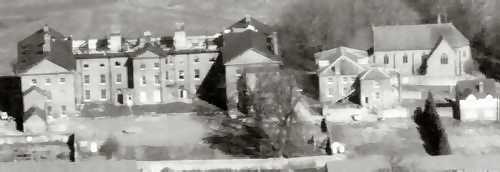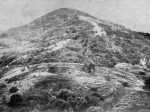Wales
The Long Struggle for Identity: The Story of Wales and its People by Peter N. Williams, Ph.D.
The Long Struggle for Identity: The Story of Wales and its People by Peter N. Williams, Ph.D.
Oswestry Town Walls
Now specially featured on Oswestry-History - Oswestry Town Walls
Philip Davis's Database - Webinfo
Now specially featured on Oswestry-History - Oswestry Town Walls
Philip Davis's Database - Webinfo
Wartime in Oswestry
Wartime in Oswestry DVD/Video - Details
Operation Home Front - The spirit of life at home in Oswestry 1939 to 1945 - Website
Wartime in Oswestry DVD/Video - Details
Operation Home Front - The spirit of life at home in Oswestry 1939 to 1945 - Website
Wat's Dyke
A detailed description of Wat's Dyke by Keith J. Matthews - Webinfo
Old Wat's Dyke Website available via the Internet Archive & brief history
The Anglo-Saxons and Wat's Dyke by John Davis
A detailed description of Wat's Dyke by Keith J. Matthews - Webinfo
Old Wat's Dyke Website available via the Internet Archive & brief history
The Anglo-Saxons and Wat's Dyke by John Davis
Welsh Guards Collection
The Official Welsh Guards Museum is at Park Hall - Welsh Guards Collection History
The Official Welsh Guards Museum is at Park Hall - Welsh Guards Collection History
Weston Rhyn
A brief history - Webinfo
A brief history - Webinfo
Whittington Castle
Whittington Castle Preservation Trust - Website
Castles of Wales - Whittington Webinfo
Whittington Castle and Robin Hood? - Webinfo
Whittington Castle Preservation Trust - Website
Castles of Wales - Whittington Webinfo
Whittington Castle and Robin Hood? - Webinfo
Workhouse and Poor Law Union in Oswestry
Oswestry's Workhouse was situated in Morda. It was opened in 1792 as a communal workhouse for Oswestry Hundred, Chirk and Llansilin. Following the1834 Poor Law Amendment Act it's member parishes included Chirk, Kinnerley, Knockin, Llansilin, Llanymynech, Llanyblodwell, Oswestry Parish, Oswestry Town and Liberties, Ruyton of the Eleven Towns, St Martin, Selattyn, Soughton or or Sychtyn, West Felton, and Whittington. Weston Rhyn joined the Incorporation in 1897.
Oswestry Workhouse Webinfo - by Peter Higginbotham
BBC - Syd Bailey's Memories of Morda's workhouse

This photograph of the rear of the workhouse (courtesy of Ian Evans) was taken in March 1982. Most of the buildings were demolished following a devastating fire later in the year.
The descriptions below were extracted from Listed Building Data August 2006
(w3.oswestrybc.gov.uk/xml_engHeritage/LB_Shropshire_Oswestry.XML)
MORDA HALL
Former west wing of Poor Law Hospital, now converted to domestic accomodation. 1791-2 with later alterations. Red brick, flat-pitched roof hidden behind re-built parapet. 6 x 3 bays. 2 storeys, stone moulded eaves cornice; east and west sides with late C20 casements but retaining some original openings; triple round-arched blind arcades to north and south sides on ground-floor, north with stone impost band and C20 casements in original openings on both floors except for western bay which has prominent late C20 entrance porch, south side with late C20 single-storey extension abutting; re-built stacks to parapet on east and west sides. Forms an integral element of the now largely demolished Morda House (q.v. under Nightingale Wing) and included for group value.
NIGHTINGALE WING OF FORMER MORDA HOSPITAL
Former east wing of Poor Law Hospital, now disused. 1791-2 with later additions and alterations. Red brick, slate hipped roof with end stack to right. 6 x 3 bays with prominent C19 additions to rear. 2 storeys, stone moulded eaves cornice; west front has glazing bar sashes with gauged heads except to 2 left-hand bays on ground floor (re-built late C20); triple round-arched blind arcades on north and south on ground floor, former with stone impost band, glazing bar sashes and gauged heads. C19 additions to rear and set back to right are not of special architectural interest. For former west wing q.v. under Morda Hall.
Oswestry's Workhouse was situated in Morda. It was opened in 1792 as a communal workhouse for Oswestry Hundred, Chirk and Llansilin. Following the1834 Poor Law Amendment Act it's member parishes included Chirk, Kinnerley, Knockin, Llansilin, Llanymynech, Llanyblodwell, Oswestry Parish, Oswestry Town and Liberties, Ruyton of the Eleven Towns, St Martin, Selattyn, Soughton or or Sychtyn, West Felton, and Whittington. Weston Rhyn joined the Incorporation in 1897.
Oswestry Workhouse Webinfo - by Peter Higginbotham
BBC - Syd Bailey's Memories of Morda's workhouse

This photograph of the rear of the workhouse (courtesy of Ian Evans) was taken in March 1982. Most of the buildings were demolished following a devastating fire later in the year.
The descriptions below were extracted from Listed Building Data August 2006
(w3.oswestrybc.gov.uk/xml_engHeritage/LB_Shropshire_Oswestry.XML)
MORDA HALL
Former west wing of Poor Law Hospital, now converted to domestic accomodation. 1791-2 with later alterations. Red brick, flat-pitched roof hidden behind re-built parapet. 6 x 3 bays. 2 storeys, stone moulded eaves cornice; east and west sides with late C20 casements but retaining some original openings; triple round-arched blind arcades to north and south sides on ground-floor, north with stone impost band and C20 casements in original openings on both floors except for western bay which has prominent late C20 entrance porch, south side with late C20 single-storey extension abutting; re-built stacks to parapet on east and west sides. Forms an integral element of the now largely demolished Morda House (q.v. under Nightingale Wing) and included for group value.
NIGHTINGALE WING OF FORMER MORDA HOSPITAL
Former east wing of Poor Law Hospital, now disused. 1791-2 with later additions and alterations. Red brick, slate hipped roof with end stack to right. 6 x 3 bays with prominent C19 additions to rear. 2 storeys, stone moulded eaves cornice; west front has glazing bar sashes with gauged heads except to 2 left-hand bays on ground floor (re-built late C20); triple round-arched blind arcades on north and south on ground floor, former with stone impost band, glazing bar sashes and gauged heads. C19 additions to rear and set back to right are not of special architectural interest. For former west wing q.v. under Morda Hall.
The Wrekin
We shall probably never know what the Oswestry Iron Age people called it, what it represented to them or what contact or relationship they had with Wrekin inhabitants but we can be certain it always occupied space in their thoughts.
It is visible from my house at Llynclys and it fascinates me to think I can drive 30 minutes and still not be passed it - so even in the 21st Century it represents to me a sort of boundary marker.
History of The Wrekin's hill fort
The Giant & The Cobbler - Shropshire Myth
We shall probably never know what the Oswestry Iron Age people called it, what it represented to them or what contact or relationship they had with Wrekin inhabitants but we can be certain it always occupied space in their thoughts.
It is visible from my house at Llynclys and it fascinates me to think I can drive 30 minutes and still not be passed it - so even in the 21st Century it represents to me a sort of boundary marker.
History of The Wrekin's hill fort
The Giant & The Cobbler - Shropshire Myth
Help Required!
If you know of any links or articles which could make Oswestry-History more useful then please visit the Feedback page

